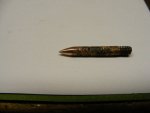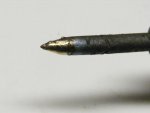Hi
i will be building a list of any tips i have in electronics as i learn :beer:
Tip 1 (gotta start somewhere )
)
WANT A VERY ACCURATE TRIP POT?
but only have a 100 Ohm one?
try putting a resistor across the outer pins (the track)
if you add a 10 Ohm resistor to a 100 Ohm pot you get a ~10 Ohm trim pot
Tip 2
if anyone has tips plz add, i will include them here :thanks:
ps will try some suggestions and post my findings too
i will be building a list of any tips i have in electronics as i learn :beer:
Tip 1 (gotta start somewhere
WANT A VERY ACCURATE TRIP POT?
but only have a 100 Ohm one?
try putting a resistor across the outer pins (the track)
if you add a 10 Ohm resistor to a 100 Ohm pot you get a ~10 Ohm trim pot
Tip 2
I tested this on an NE555P using sink/source with 2 100uf 50v electrolytic caps and after about 3hrs (10k+cycles) at 12v ive notice no change in farads on my DMM, also used in RC timing and pulsed more or less identical time to 47uf cap. :gj:dnar said:Do you need a non-polarised electrolytic for an audio project and you do not have one? Wire two identical polarised electros in series by joining negatives. Resulting C is half the value of capacitors used.
if anyone has tips plz add, i will include them here :thanks:
ps will try some suggestions and post my findings too
Last edited:






